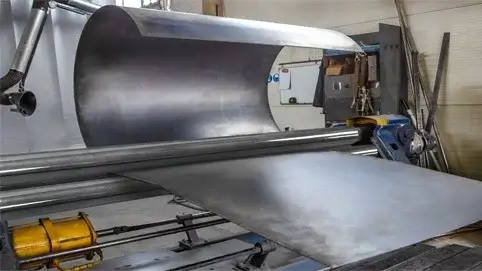There are many ways to give metal the desired shape. Among the various methods of processing sheet steel, rolling is especially popular. A special machine, with certain settings, skipping the workpiece, gives it a rounded shape, further from it can make a large diameter pipe. The rounded shape is also necessary for other, very diverse purposes.
Feature of rolling
Special shafts, rollers are involved in the process, they physically act on the metal sheet, gradually rounding it to the desired diameter. Since the sheet is affected quite gently, it does not accumulate metal stresses in its structure. This has a positive effect on the performance properties of the finished product. In addition, rolled pipes can also be rolled. The main materials worth highlighting are:
1. Separate grades of stainless steel.
2. Alloys of aluminum and copper, as well as pure metals.
3. Galvanized steel sheet can be rolled.
4. Almost all steel alloys containing carbon in their composition.
The main raw material for the rolling machine is a metal sheet of a wide variety of thicknesses. Properly selected rollers, setting angles and the experience of the working staff are able to show a worthy result in the manufacture of certain products in practice.
The technological process of curvature
The rolling process does not occur instantly. At a minimum, the machine tools must be adjusted to the existing metal workpiece. Take into account the angle of curvature so that the finished result matches the drawings. The following steps should be distinguished as standard:
- the sheet of metal must be firmly fixed;
- check the exact grip of the rollers over the entire width;
- gradual deformation with quality control.
If the bend angle is too large, the process stretches into several stages. This is necessary in order not to spoil the workpiece; during the deformation process, the metal did not heat up and did not change its physical and chemical properties. The technology is quite simple, but requires a responsible approach to the implementation of all procedures. Regular, visual control from a specialist.





